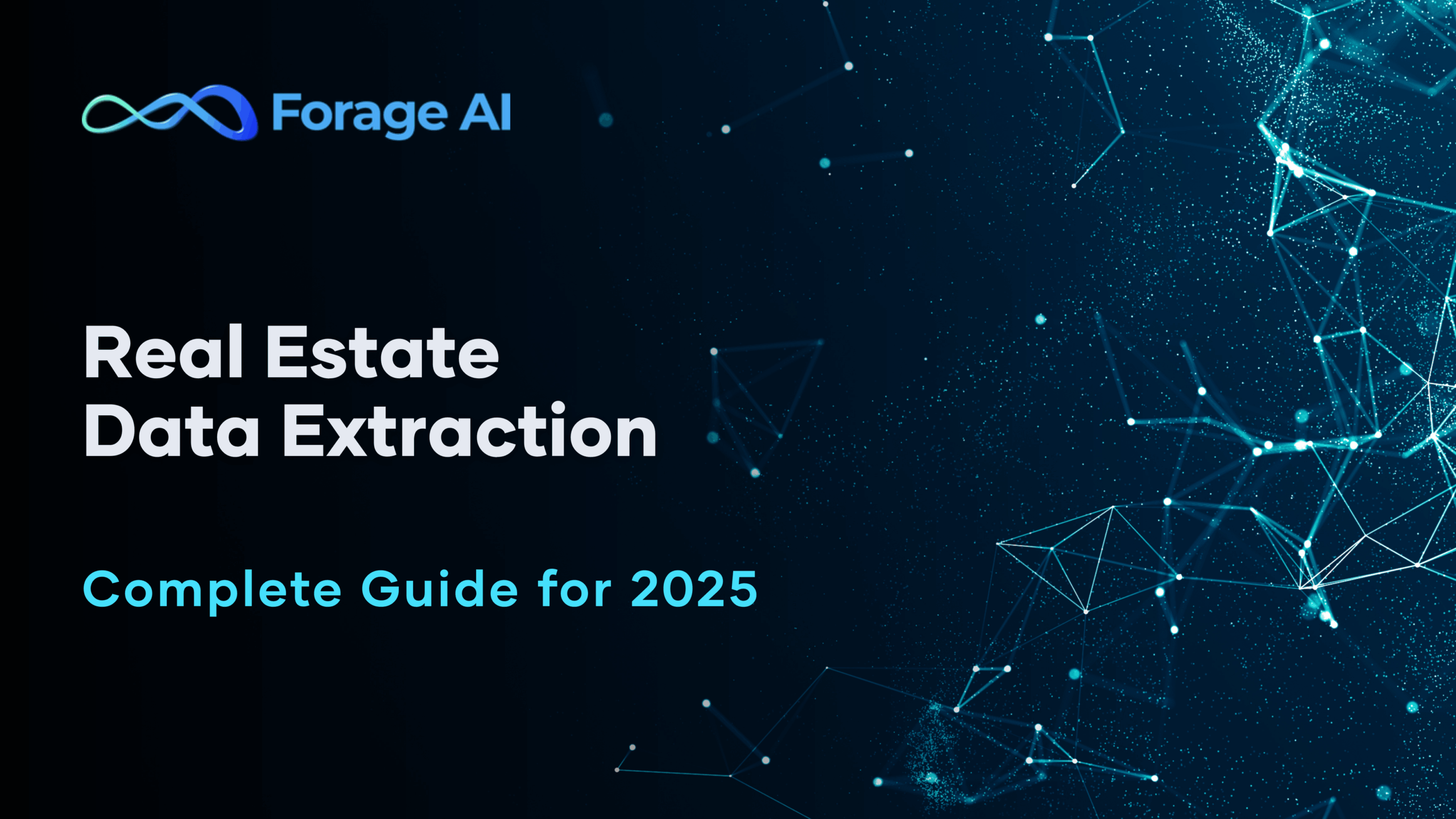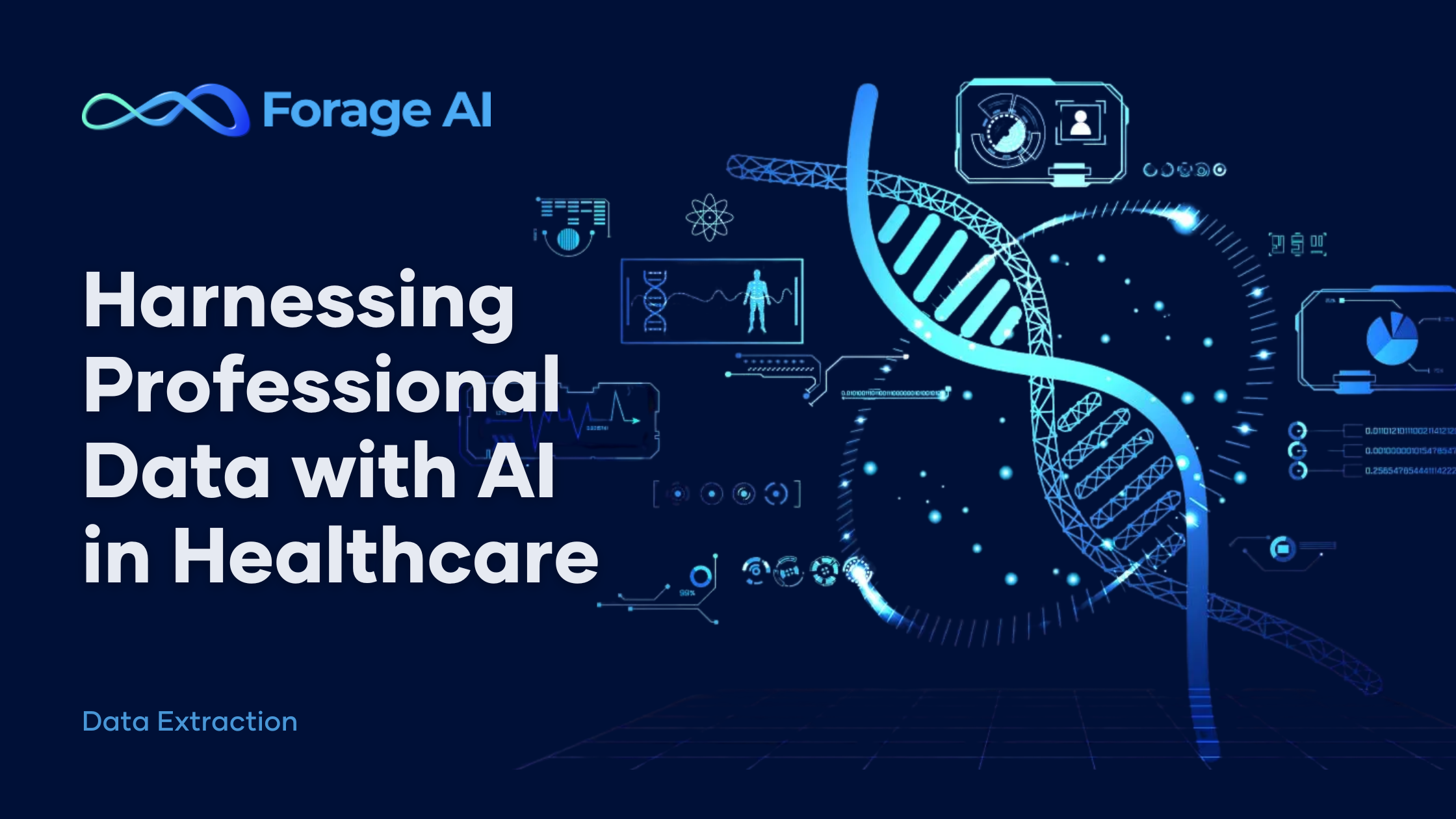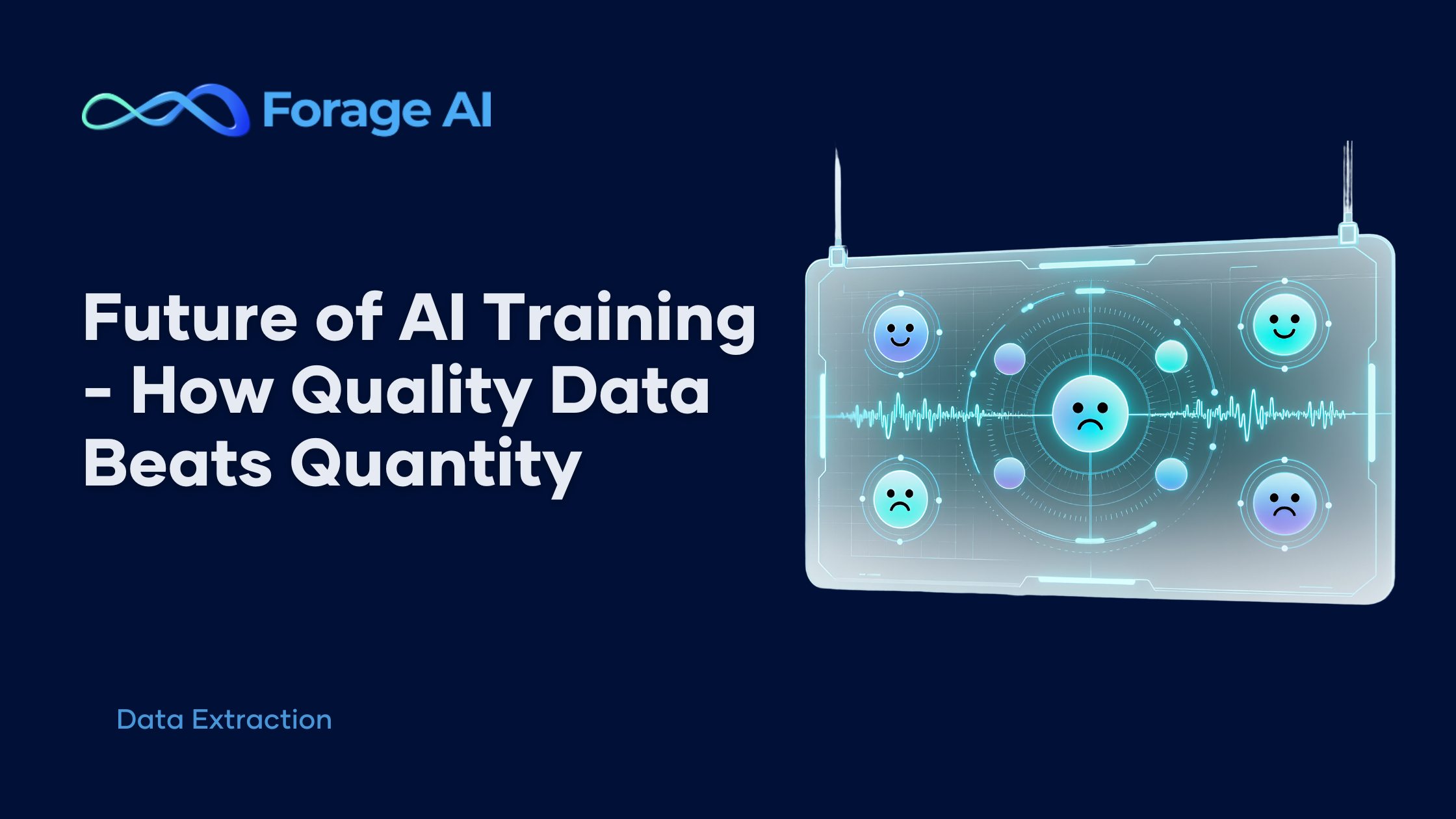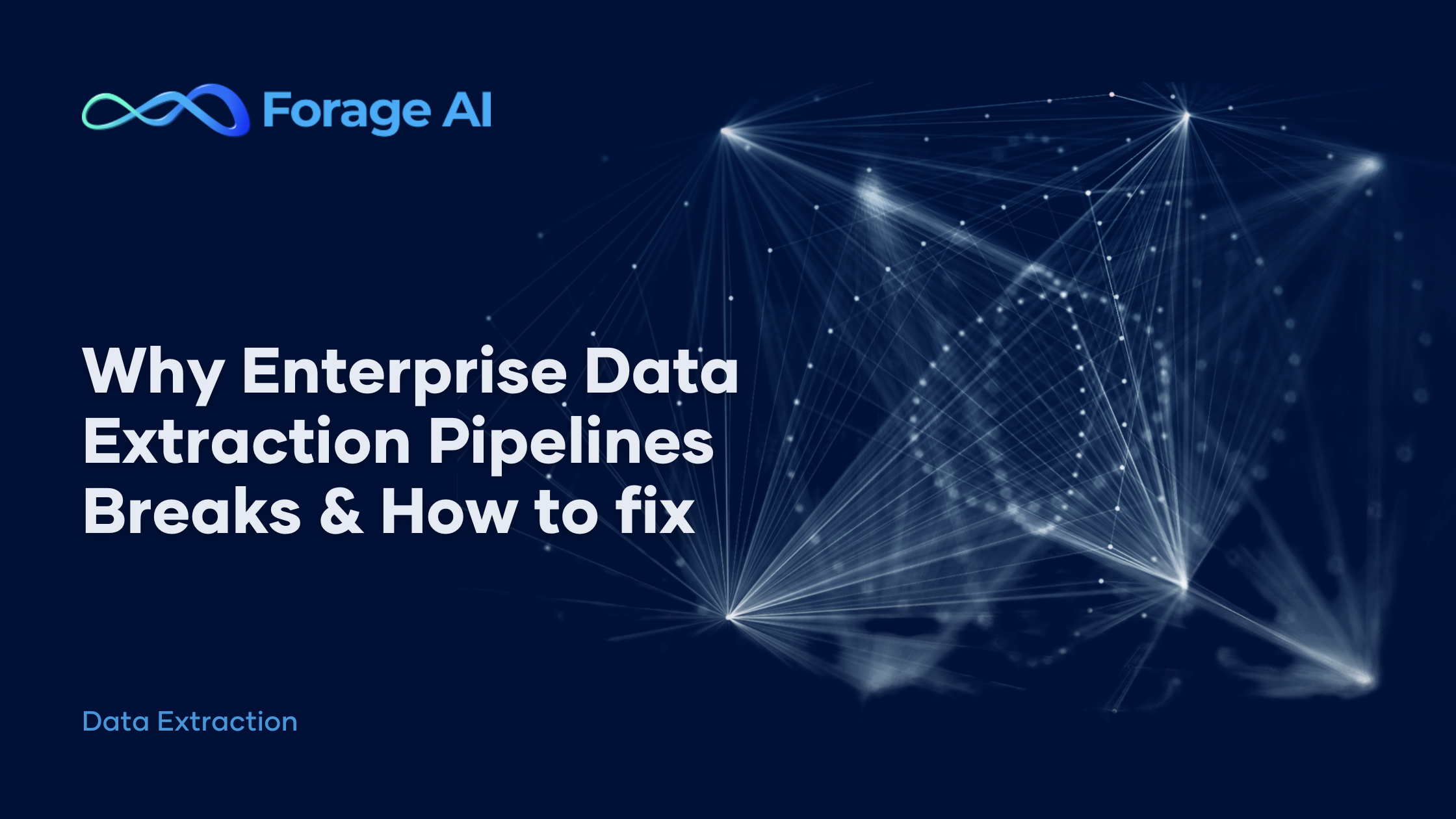What happens when your competitor closes deals faster because they spotted market trends three days before you did? Or when a promising investment opportunity slips away because your property data was outdated?
Poor data quality costs companies an average of $15 million annually and can reduce potential revenue by up to 25% (Gartner). In 2025, the real game-changer is AI that transforms raw property information into actionable real estate data. This delivers insights your competition doesn’t even know exist yet.
The real-estate landscape has fundamentally shifted. AI technologies are transforming how firms extract, process, and analyze commercial property data. While traditional approaches still exist, the firms winning in 2025 are those who’ve already integrated these capabilities. If you haven’t yet, here’s your chance to catch up and rule the market.
What you’ll learn:
- Top 5 AI technologies revolutionizing data in real estate today.
- Real business impacts these technologies deliver.
- Clear guidance on whether to build or partner for implementation.
2025 AI Technologies Transforming the Real Estate Industry
The landscape for real estate data in 2025 has fundamentally shifted. While traditional data extraction challenges and solutions remain relevant, the key differentiator for those witnessing success in real estate is the use of AI-powered real estate data analytics, vs. those relying on outdated tools. Early adopters are already identifying opportunities others miss entirely.
Agentic AI-powered data extraction
Manual extraction of data in real estate once meant hiring teams to update spreadsheets daily. Agentic AI systems have revolutionized this process. These systems go beyond traditional web scrapers that break with every website update.
Modern AI agents understand context, recognize patterns, make intelligent decisions, and adapt to changes without manual intervention. They process property information with accuracy that matches experienced analysts.
What AI agents actually do for your business:
- Hunt for properties with precision – Search across entire metro areas, finding exactly what clients need: “retail spaces near universities with parking for 50+ cars”. AI does this in the background while you finish other tasks.
- Generate investment reports in minutes – Pull comparables, calculate Capitalization Rates (CAP rates), and estimate Net Operating Income (NOI) from multiple real estate data providers simultaneously.
- Navigate compliance automatically – Parse zoning laws, building codes, and permit requirements that typically consume hours of manual research time.
- Monitor your portfolio round-the-clock – Track price changes and new listings across thousands of properties through Multiple Listing Service (MLS) feeds and other sources. You can even set up workflows to generate automated alerts.
- Process natural language requests – Handle complex queries like “multifamily properties near good schools under $2M” and deliver relevant, accurate results.
Business impact: Your commercial property data stays current even when property sites completely redesign their interfaces. Investment firms have witnessed their property research time reduce from 2-3 days to about 4 hours using these systems.
Smart Property Record Matching
AI-powered entity matching solves a critical problem in real estate data analytics: duplicate property records that lead to million-dollar valuation errors. These systems help identify duplicate properties across multiple databases despite inconsistent addresses, names, or identifiers.
Modern matching algorithms process commercial property data with high accuracy, even when source systems use completely different formatting standards. The technology eliminates the manual reconciliation that previously consumed entire teams.
How AI entity matching transforms operations:
- Standardize addresses automatically – Clean and normalize property addresses across databases (“123 Main St.” vs “123 Main Street, Unit A”) without manual intervention.
- Match properties despite inconsistencies – Recognize the same property even with different parcel IDs, ownership records, or slight name variations using fuzzy matching algorithms.
- Merge data from multiple sources – Combine information from Multiple Listing Service (MLS) systems, county records, and private databases into unified property profiles.
- Track ownership changes over time – Link current records with historical data in real estate transactions, maintaining continuity through ownership transfers and corporate restructuring.
- Score confidence levels intelligently – Assign match probabilities and flag uncertain matches for review while automatically processing high-confidence matches.
Business impact: Firms using entity matching eliminate duplicate property records and improve data accuracy across their portfolios. This prevents costly errors in property valuations and ensures accurate tracking across multiple real estate data providers and geographic regions.
AI-Powered Predictive Analytics and Valuation Models
Traditional property valuation relied on comparable sales and manual assessments that took days to complete. Modern AI systems generate detailed property valuations in minutes by processing satellite imagery, economic indicators, permit data, and market trends.
These predictive models analyze patterns invisible to human analysts, identifying value changes at the neighborhood level before they appear in traditional real estate data sources.
What predictive valuation systems deliver:
- Analyze visual and geographic data – Process satellite imagery to assess roof condition, landscaping quality, and neighborhood development patterns that impact property values.
- Monitor market signals continuously – Track foot traffic patterns, social media activity, and local business openings to identify emerging high-value neighborhoods.
- Score investment potential automatically – Evaluate cash flow projections, tenant quality indicators, and market conditions to rank properties by Return on Investment (ROI) probability.
- Generate instant comparable valuations – Analyze thousands of similar properties to deliver Automated Valuation Models (AVMs) within seconds instead of days.
- Identify undervalued opportunities – Flag properties trading below predicted values and detect micro-market changes before broader market recognition.
Business impact: Predictive real estate data analytics systems continuously evaluate market conditions, delivering instant valuations. This technology could generate $34 billion in industry cost savings by 2030 (Morgan Stanley Research).
Implementing predictive analytics requires a deep understanding of both AI and real estate data complexities. Real-estate data providers like Forage AI combine 15+ years of data extraction experience with cutting-edge technological expertise to build a system that can be customized for your particular needs.
Intelligent Property Search with RAG Technology
Retrieval Augmented Generation (RAG) transforms how professionals search commercial property data. Instead of clicking through dozens of filters, users simply describe what they need in plain language.
RAG systems understand context and nuance in ways traditional search cannot. They process complex requirements and adapt to regional differences, making property discovery intuitive and efficient.
How RAG-powered search improves outcomes:
- Process complex natural language queries – Understand requests like “single-family homes near top-rated schools with home offices under $400K” and return accurate results.
- Combine multiple criteria intelligently – Handle searches mixing location, amenities, price, and qualitative factors without requiring separate keyword searches.
- Learn from user behavior – Adapt to preferences over time, understanding that a particular client prioritizes school districts over square footage.
- Provide conversational refinement – Enable follow-up questions like “show similar properties but with larger kitchens” without starting searches from scratch.
- Ground results in verified data – Pull information from authenticated MLS feeds and county records, preventing the hallucinations common in general AI models.
Business impact: RAG eliminates search frustration while ensuring accuracy through verified property databases and MLS feeds. Clients find relevant properties much faster, improving satisfaction and closing rates.
Generative AI and Intelligent Document Processing
Real estate professionals spend significant time manually processing documents, such as lease agreements, inspection reports, appraisals, and regulatory filings. Generative AI combined with Intelligent Document Processing (IDP) automates this work while improving accuracy.
Modern systems extract, analyze, and summarize complex property documents in minutes. They understand context, identify key terms, and flag potential issues that humans might miss.
How document AI accelerates transactions:
- Extract key terms from any document – Process lease agreements, purchase contracts, and inspection reports to summarize and automatically identify critical dates, amounts, and conditions.
- Generate investment summaries instantly – Analyze financial statements, rent rolls, and market reports to create executive summaries highlighting opportunities and risks.
- Automate compliance documentation – Review zoning documents and building codes to generate compliance reports and identify potential regulatory issues.
- Create intelligent comparisons – Analyze multiple property documents simultaneously to generate detailed comparison matrices for investment committees.
- Combine visual and textual analysis – Process floor plans alongside lease documents to verify space allocations and identify discrepancies.
Business impact: IDP solutions reduce document processing time by up to 75% while improving accuracy. Teams focus on deal-making instead of manual document review, accelerating transaction velocity across the organization.
These advances create new opportunities but also raise an important question: should you build these capabilities internally or partner with specialists? The answer depends on your specific situation.
Choosing Your Implementation Approach
These AI technologies are transformative, but success depends on choosing the right implementation path. Here’s how to determine what works for your organization –
Assess Your Current Situation
Answer these key questions:
- How many properties do you manage?
- Under 10,000 → Consider building if you have technical resources.
- Over 10,000 → Partner for faster, more reliable results.
- What’s your timeline for AI implementation?
- Need results in 2-3 months → Partner with providers.
- Have 9+ months to develop → Building becomes viable.
- What technical resources do you have?
- 5+ dedicated developers with AI experience → Can build.
- Limited or no technical team → Partner is essential.
- What’s your risk tolerance?
- Can handle downtime and iterations → Building is possible.
- Need 99%+ uptime and reliability → Partner with experts.
Build vs. Partner: The Essential Comparison
| Factor | Build Internal | Partner with Providers |
|---|---|---|
| Speed to Launch | 6-9 months | 6-12 weeks |
| Best For | <10K properties, stable sources | 10K+ properties, complex needs |
| Your Team Needs | 5+ AI developers full-time | No technical team required |
| Monthly Cost | Low initial, high ongoing | Higher initial, lower ongoing |
| What You Control | Everything (and all the headaches) | Your data and strategy (not the tech) |
| Biggest Risk | Breaking systems, downtime | Vendor dependency |
The 2025 Reality: Speed to AI implementation determines market position. While some firms still debate building the features, other leaders are already operational with these technologies.
The comparison and criteria above help you evaluate options, but the critical factor is expertise. These aren’t simple software installations – they require a deep understanding of both AI capabilities and real estate data complexities.
Professional providers like Forage AI have already integrated these AI technologies specifically for commercial property data extraction. This eliminates the months of development and testing required for internal builds, while providing more dependable and sophisticated capabilities than generic real estate data providers offer.
The window for competitive advantage is closing. Firms implementing these technologies now will dominate their markets by 2026, while late adopters will struggle to catch up.
The AI Advantage Starts Now
Next Steps: Evaluate your current real estate data analytics capabilities against your 5-year growth plan. Identify your biggest obstacles and pain points – whether it’s property search, data accuracy, or document processing. Then choose an implementation approach that gets you operational the fastest.
Talk to our real estate data experts to assess which technologies would deliver the most immediate impact for your specific portfolio and market position.





